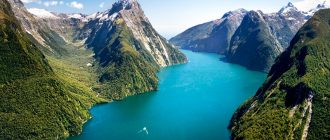Netherlands (Holland) – the most detailed information about the country with a photo. Attractions, cities in the Netherlands, climate, geography, population and culture.
Contents
- 1 Netherlands (Nederland)
- 2 Useful information about the Netherlands
- 3 Geography and nature
- 4 Climate
- 5 Best time to visit
- 6 Story
- 7 Administrative division
- 8 Population
- 9 Transport
- 10 Cities of the Netherlands and popular destinations
- 11 Sights of the Netherlands
- 12 Accommodation
- 13 Kitchen
- 14 Video
- 15 Netherlands on the map
Netherlands (Nederland)
The Netherlands is a state in northwestern Europe, located on the coast of the North Sea. It borders with Germany and Belgium and has overseas territories – islands in the Caribbean. The Netherlands is a small country that is constitutional monarchy and is part of the European Union. The country is known for its rich cultural heritage, wind mills, tulips and the most liberal in Europe the atmosphere.
The Netherlands is one of the most densely populated and “even” countries. Europe, fortified dykes and penetrated by a network of channels. it state of pastoral landscapes, picturesque villages and tranquil cities, mansions among which are Amsterdam, Rotterdam and Utrecht Once a great naval power, now the Netherlands – a modern European country that still plays an important role in the international arena. Due to its compactness and Hospitality is one of the most popular tourist destinations. directions of Europe.
Often the Netherlands is called Holland and this is not entirely true. The official name of the state is the Kingdom of the Netherlands. Holland is just two of the twelve provinces.
 Netherlands flag
Netherlands flag
- Useful information
- Geography and nature
- Climate
- Best time to visit
- Story
- Administrative division
- Population
- Transport
- Cities of the Netherlands
- sights
- Accommodation
- Kitchen
Useful information about the Netherlands
- The population is more than 17 million people. Population density – 405 person / km² (one of the highest in the world).
- The area is 41,543 km².
- Language – Dutch (Dutch) and Frisian.
- Currency – Euro.
- Visa – Schengen.
- Time – UTC +1, summer +2.
- The capital is Amsterdam.
- The Netherlands is among the ten most developed countries of the world.
- The highest point is the Walserberg hill (323 m).
- Major Holidays: Christmas (December 25), King’s Day (27 April), the Day of Liberation (May 5).
- 44% of the population of the Netherlands are atheists, 29% are Catholics, 19% are Protestants, 6% – Muslims.
- The length of bicycle lanes – more than 35 000 km
- Car traffic is right hand. Speed Limit: settlement – 50 km / h, outside the settlement – 80 – 100 km / h (according to road signs), motorways – 130 km / h. Automotive fuel in the Netherlands is one of the most expensive Europe.
- The Netherlands is one of the safest countries in Europe. The most common offenses are pickpocketing and theft bicycles.
- The Netherlands is famous for its festivals. The most famous of them are: King’s Day (Koningsdag), the festival of colors and the summer carnival in Rotterdam.
- The Netherlands is famous for its wooden shoes (Klompen). Of course, no one wears it now, but it is popular. souvenir.
- The Netherlands is one of the most liberal and cosmopolitan countries. of the world.
Geography and nature
The Netherlands is located in the western part of Central European the plains. The north and west of the country is washed by the North Sea. More half of the state lies below sea level, which explains the name of the country (the Netherlands translates from Dutch as “Lowlands”). In terms of relief, the Netherlands can be divided in two parts: north and west – these are lowlands of the deltas of the Rhine, Meuse and Scheldt, south and east – hilly plain, passing into the foothills Ardennes
 Amsterdam – the capital of Holland
Amsterdam – the capital of Holland
Due to intensive business activities, most The territory of the Netherlands is occupied by pastures and arable land. Woodlands occupy only 8% of the territory and most of the green areas are groves and parks. The following tree species prevail: oak, beech, hornbeam, ash, pine (on sandy soils) and willow (along rivers and canals). The animal world is rather poor, although there are deer in the parks, badgers, foxes, hares.
 Landscapes The Netherlands
Landscapes The Netherlands
Regionally, the Netherlands is divided into:
- Western Netherlands (Flevoland, Noord Holland, South Holland) or Randstad is the heart of the country with the largest cities and traditional Dutch countryside.
- Northern Netherlands (Drenthe, Friesland, Groningen) – least densely populated and developed region, popular among the dutch
- Eastern Netherlands (Gelderland, Overijssel) – the largest national park and seven medieval cities along the river IJssel
- Southern Netherlands (Limburg, Zeeland) – a region with a Catholic traditions and burgundy character.
Climate
The climate is temperate with significant maritime influence. Summer cool and rainy with an average temperature of 18 – 20 ° C. Winter mild with rare frosts and average temperature +1, +3 ° C
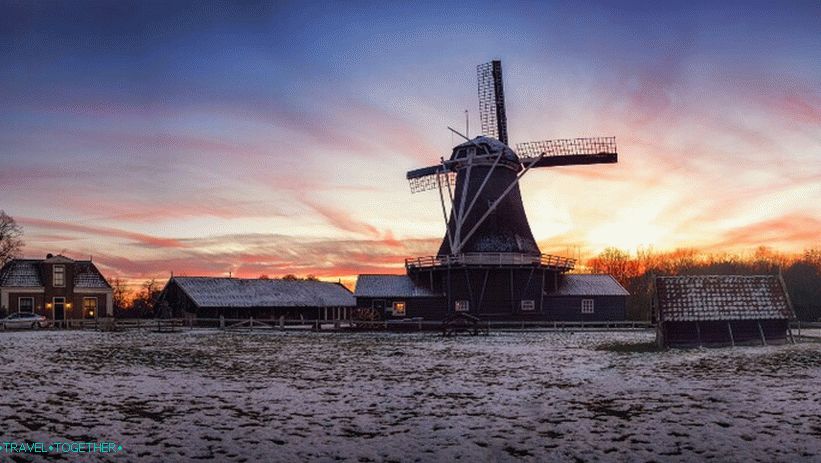 Winter in The Netherlands
Winter in The Netherlands
Best time to visit
The Netherlands can be visited all year round. Here every season has your mood and charm. Spring is the flowering of tulips, summer – long walks, autumn – time to open the Dutch nature on cycling, winter is the charm of Christmas and a minimum of tourists after him.
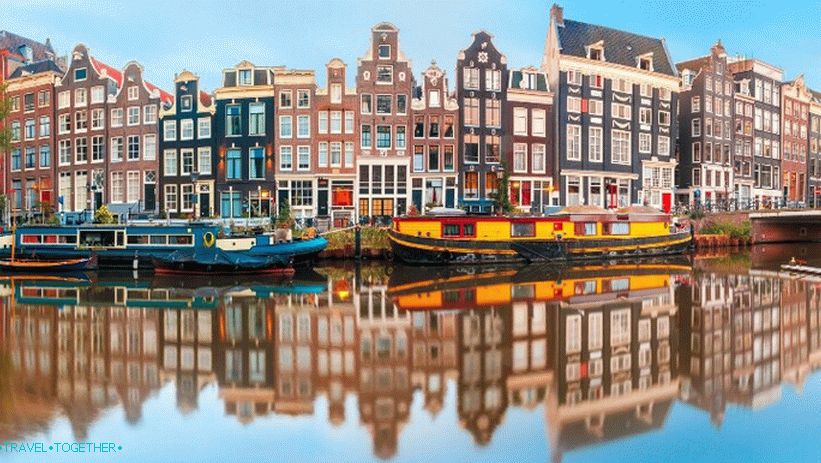 Amsterdam
Amsterdam
Story
Before the arrival of the Romans the territory of the Netherlands was settled Germanic tribes and Celts. The Roman Empire seized the southern part of the country and included it in the province of Belgika. With time The Germans settled south of the Rhine and formed the tribes of the Batavians and toxander, who are considered the ancestors of modern the dutch
After the collapse of the Roman Empire, three people were formed: the Franks, friezes and Saxons. At the end of the 5th century, the Franks adopted Christianity, conquered Frieze and became allies of the Saxons. By 734 the whole territory modern Netherlands was part of the Kingdom of the Franks. In 843 the year the Carolingian Empire fell apart, and the territory of the Netherlands was divided between the Western and Eastern kingdoms of the Franks. From 9 to 11th century North Sea coast suffered from raids the Vikings.
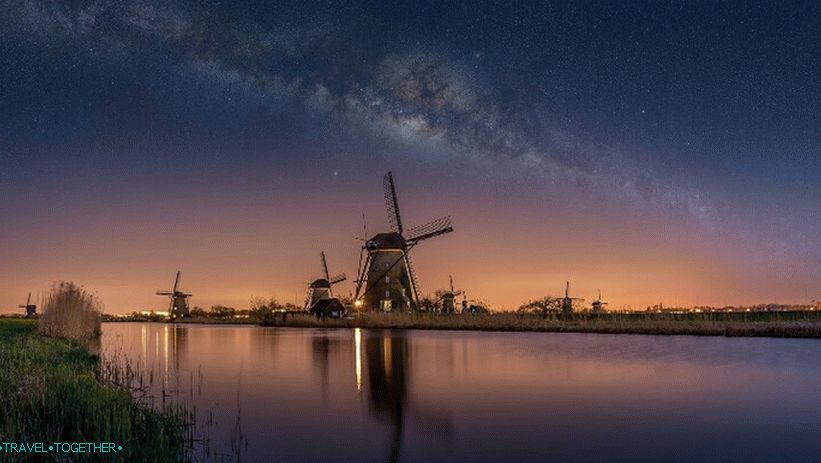 Windmills mills – a symbol of the Netherlands
Windmills mills – a symbol of the Netherlands
In the 10th – 11th centuries the territory of the Netherlands was subordinated German emperors and was part of the Holy Roman empire. This period begins the settlement of the western lands, which is accompanied by the drainage of swamps and the creation of farms. Region acquires a franconian character and since the 12th century these territories have been called Holland The first crusades and the development of trade contributes to the growth and elevation of cities (especially in the provinces Flanders).
From 1384 to 1482 most of the territory of the Netherlands was subordinated to the dukes of Burgundy. This period develops the Dutch fleet is growing and towering Amsterdam, and the Dutch themselves successfully vie with the Hanseatic League. At the end of the 15th century the Netherlands began to belong to the Spanish Habsburg. In 1568 begins the struggle for independence, which resulted in the Eighty Years war In 1579, the Republic of the United provinces – the first independent Dutch state, which lasted until the end of the 18th century. Southern provinces still obeyed the Spanish crown.
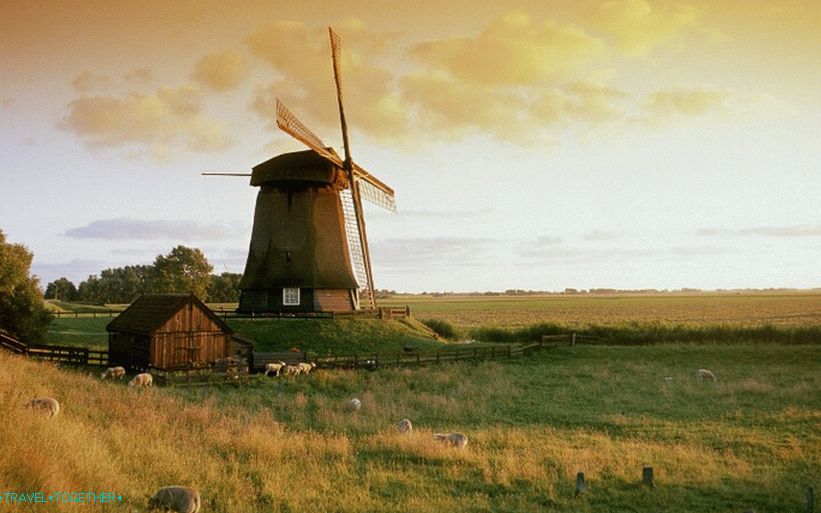 Dutch landscapes
Dutch landscapes
In the 17th century, a period begins which is commonly called the “golden century of the Netherlands. “The state has a powerful fleet and becomes shopping center throughout northern Europe. The Dutch are not only successful traded, but also founded colonies in North, South and Central America In the 17th and 18th centuries, the Netherlands became the center of immigration. Despite this, the economy began to stagnate, trade routes shifted toward America and the defeat in the war for the Spanish The inheritance deprived the Netherlands of the status of a strong European power. AT the state further tried to adhere to the policy neutrality but has been repeatedly invaded the french
At the end of the 18th century, a revolution occurred in the Netherlands and was proclaimed the Batavian Republic, which during the Napoleonic period Wars replaced the Dutch kingdom, controlled by Napoleon. it the state also lasted only a short time. In 1815 it was formed the United Kingdom of the Netherlands. In 1848 the state has become a constitutional monarchy, which is interestingly calm and no casualties. During the two world wars, the Netherlands declared neutrality. However, in 1940 the state was occupied Germany and released in 1944.
Administrative division
 Administrative division
Administrative division
The Netherlands is divided into 12 provinces:
- Gelderland is centered in the city of Arnhem.
- Groningen (the capital of the same city).
- Drenthe with its capital in Assen.
- Zeeland is the administrative center of Middelburg.
- Limburg – the city of Maastricht.
- Overijssel – the city of Zwolle.
- North Brabant – the city of Hertogenbosch.
- North Holland – the city of Haarlem.
- Utrecht (the capital of the same city).
- Flevoland is the capital of Lelystad.
- Friesland is centered in the city of Leeuwarden.
- South Holland, headed by The Hague.
Population
The Netherlands is inhabited by two indigenous people: the Dutch and the Friezes. About 20% of the population are immigrants. Most common religion is christianity. Catholic and Protestant Stakes roughly equal. There are many atheists among the Dutch.
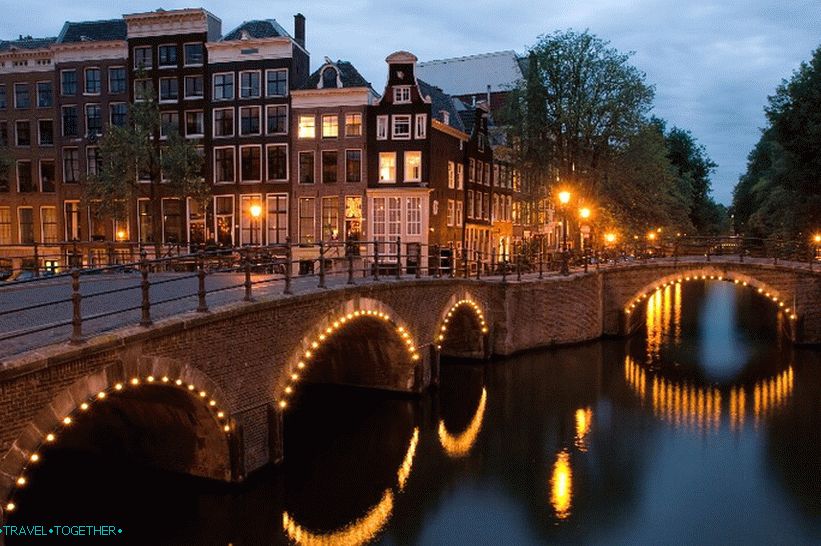 Amsterdam – the largest city of the Netherlands
Amsterdam – the largest city of the Netherlands
The Dutch themselves are among the most informal and relaxed. people in Europe. They are difficult to offend their behavior and appearance. They are open, direct and pragmatic. In business, they value determination, punctuality, earnestness and healthy conservatism. When they meet here, they usually get on with their hands and quickly move to informal communication.
Most of the population speaks Dutch, which belongs to the german language group and can be understood by people well versed in German. Also, most Dutch people speak English and German.
Transport
The largest airport of the Netherlands is located in Amsterdam and called schiphol. It is one of the largest air ports in Europe. From Schipsol there are direct trains to most major cities. The Netherlands. Other international airports are located in Eindhoven, Rotterdam and Groningen.
The train is the fastest and cheapest way to travel The Netherlands. By train you can also get to Belgium, France and Germany. The Netherlands has good roads and highways in Belgium and Germany, as well as regular ferry service with UK
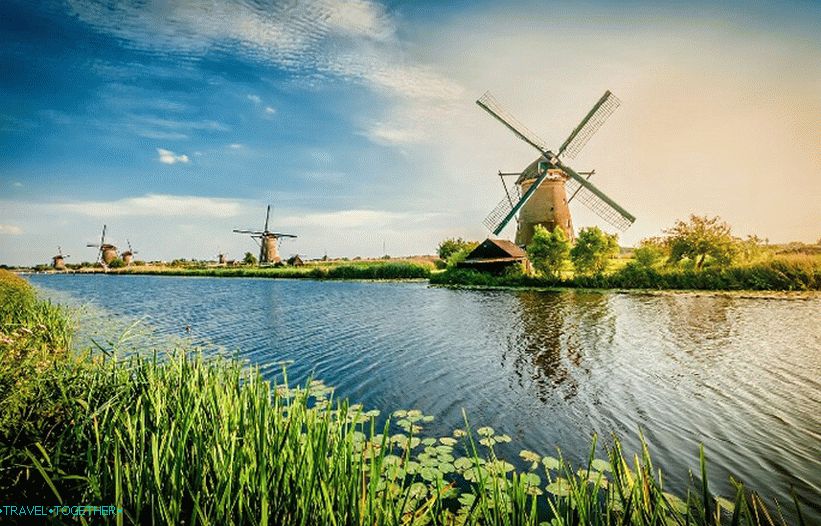 Windmills mills
Windmills mills
Cities of the Netherlands and popular destinations
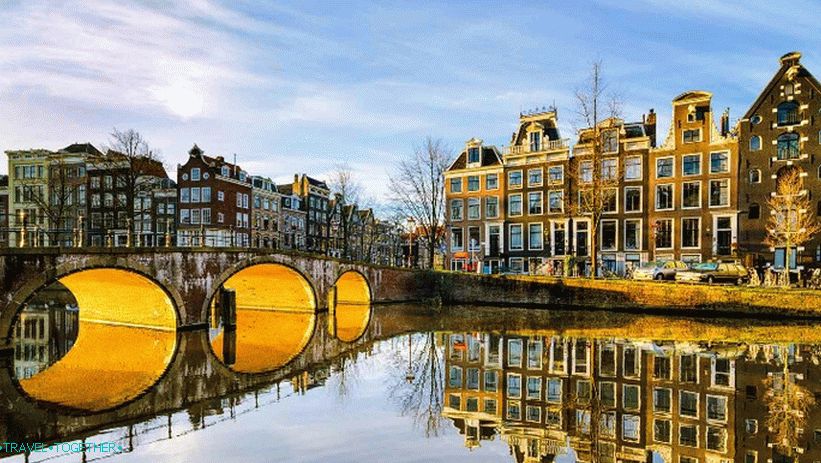 Amsterdam
Amsterdam
The most popular cities in the Netherlands:
- Amsterdam is the capital and largest city of the Netherlands, which famous for its beautiful architecture, canals and interesting bridges museums and a liberal atmosphere.
- Arnhem – the capital of the province of Gelderland with beautiful old quarters.
- Delft is an ancient city in South Holland with practically untouched historical center.
- Groningen is a student city with a relaxed atmosphere and vibrant nightlife.
- The Hague – the judicial capital of the world and the residence government.
- Maastricht is located in the south of the country and is known for its atmosphere. Medieval and old fortifications. Considered the most beautiful among the historical cities of the Netherlands.
- Nijmegen – the oldest city in the country with numerous student by the population.
- Rotterdam – the largest port in Europe, the most dynamic and modern city of the Netherlands.
- Utrecht – “Amsterdam in miniature”: beautiful architecture, canals and bicycles.
- Leiden – the birthplace of Rembrandt, where the oldest University of the Netherlands. The city is known for its canals and its historical center of the 17th century.
 Typical Netherlands
Typical Netherlands
Popular destinations:
- Efteling is the largest amusement park on the territory The Netherlands.
- Giethoorn is a charming village with beautiful architecture and street-channels, which is called the “Dutch Venice”.
- Hoge Veluwe – the largest national park The Netherlands.
- Keukenhof – one of the symbols of the Netherlands, the royal park colors.
- Southern Limburg – picturesque hills, charming villages and ancient castles.
- Waterland and Zaan – typical Dutch villages with traditional wooden architecture and windmills.
- Kinderdijk is a small village in South Holland with 19 wind turbines mills of the 18th century.
- Picturesque towns and villages along the river IJssel.
Sights of the Netherlands
 Old city Amsterdam
Old city Amsterdam
Amsterdam’s Old Town is one of the most beautiful in Europe. it area of charming canals and bridges, quaint old houses and numerous museums and churches. Rijksmuseum in Amsterdam – one of the most popular museums in the world. His collection has about 7 million works of art, including 5,000 paintings. Also in the capital of the Netherlands is a museum of one of the most prominent Dutch artists – Van Gogh.
 Windmills mills Kinderdijk
Windmills mills Kinderdijk
Kinderdijk Windmills – World Heritage Site UNESCO. 19 windmills of the 18th century are known as one of characters of the Netherlands. Located on the River Nord between Rotterdam and Dordrecht.
 Valkenburg
Valkenburg
Valkenburg – a picturesque old town with an ancient castle, famous caves and thermal springs.
 Chateau de Haar
Chateau de Haar
Chateau de Haar – an impressive castle built in the late 19th century on the site of the original castle of the 14th century.
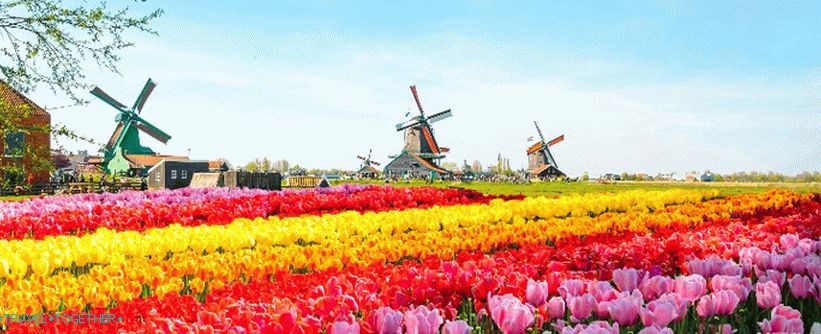 Keukenhof
Keukenhof
Keukenhof is a royal garden and a symbol of the Netherlands, which shows over 700 varieties of tulips.
 Maastricht
Maastricht
Maastricht is considered the most beautiful city in the Netherlands, which retained the medieval city fortifications and the original historical architecture. The central square of Vrijthof is one of The most beautiful city squares in the country.
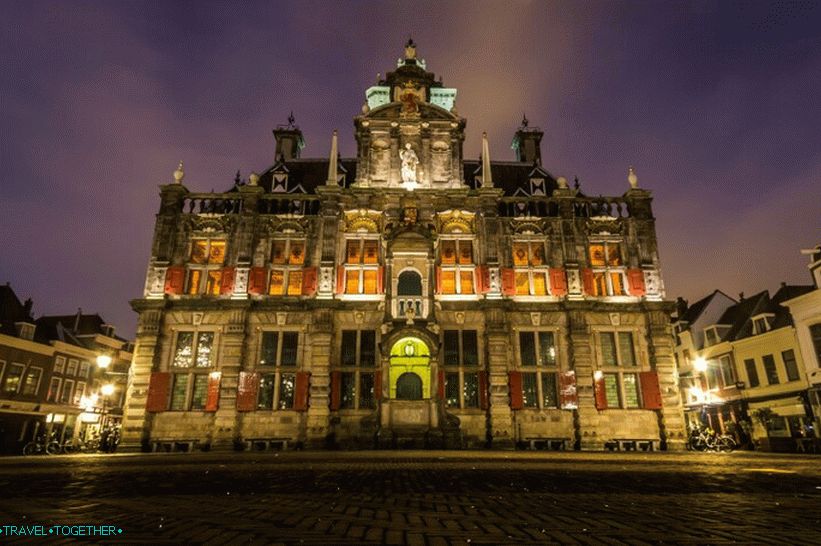 Town Hall in Delft
Town Hall in Delft
City Hall in Delft – a masterpiece of architecture in style Renaissance.
 Zaanse Schans
Zaanse Schans
Zaanse Schans is one of the most popular attractions. Netherlands, an old industrial area with traditional wooden houses and windmills.
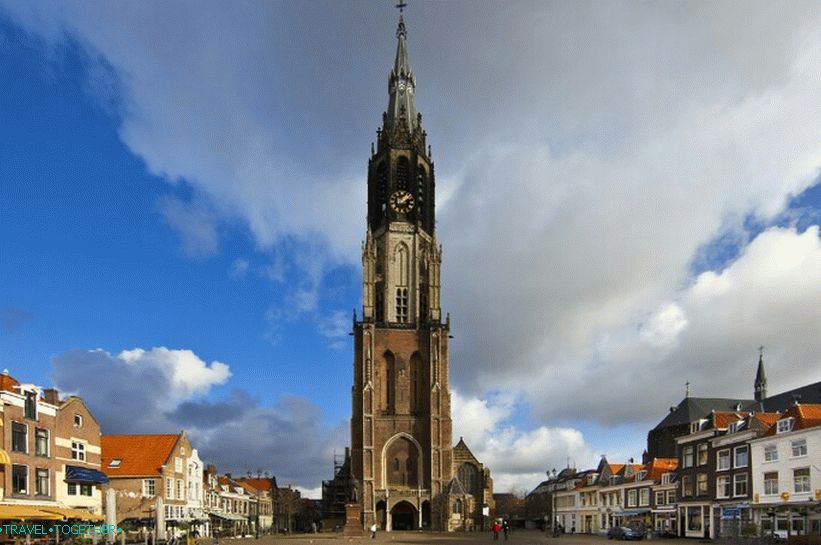 Nieuwe Kerk
Nieuwe Kerk
Nieuwe Kerk – the magnificent gothic church in Delft, founded in the 14th century.
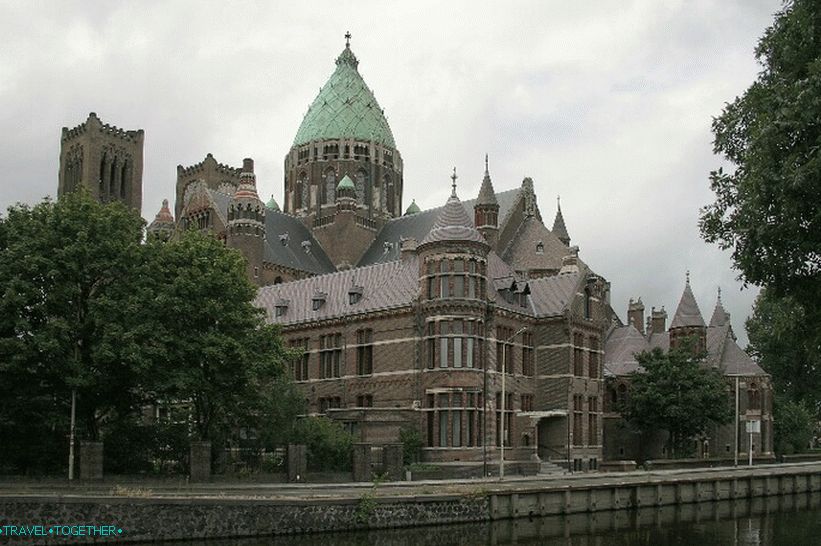
Cathedral of Haarlem – Beautiful Basilica in Gothic style built in the 16th century.
 Church of sv. John in ‘s-Hertogenbosch
Church of sv. John in ‘s-Hertogenbosch
Church of sv. John in ‘s-Hertogenbosch – Dutch masterpiece Gothic architecture, located in the province of North Brabant. The church was founded in 1220 and completed three centuries. later.
Accommodation
The Netherlands is one of the most expensive countries in Europe. Cost of Accommodation starts from about 20 Euro per person. Wherein the number of offers available depends on the season, cultural events and tourist popularity of a particular region (city). The cheapest accommodation options will be hostels and hotels of the type “bed and breakfast”. Popular hostel networks of Stayokay and Flying Pig.
 Dutch provinces
Dutch provinces
Kitchen
Dutch cuisine is not the most popular in Europe, although it quite tasty and satisfying. The main ingredients are meat, potatoes and other vegetables. Popular food:
- Haring – salted herring.
- Mussels – boiled mussels with vegetables.
- Erwtensoep – pea soup with smoked sausage.
- Kroket – popular street food, crispy potato balls with meat or seafood.
- Boerenkool – mashed potatoes with broccoli and sausages.
- Asperges Flamandes white asparagus with ham.
- Zuurkool – sauerkraut.
- Stoofvlees – meat with mushrooms.
- Hutspot – mashed potatoes with onions, carrots and meat.
- Rookworst – smoked sausage.
- Pannenkoeken – Dutch pancakes.
- Popular traditional products: cheese, chocolate and peanut pasta, chocolate.
- Bitterbal is a popular snack in bars.
- Poffertjes – small sweet pancakes with powdered sugar.
- Limburgse vlaai is a sweet cake with various fillings.
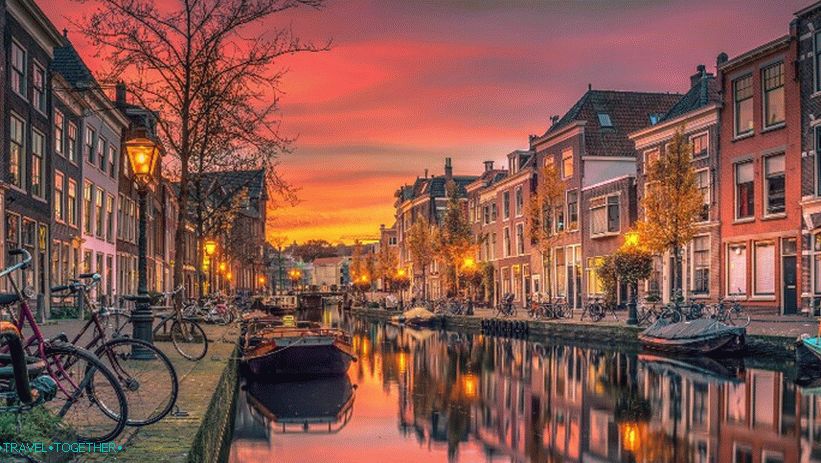 Channels
Channels
Popular drinks:
- Beer. Be sure to try the white beer (witbier) and fruit varieties (gruit). The world famous Heineken in the Netherlands is considered second-class beer.
- Bitter and gin.
- Tea, coffee and hot chocolate.





